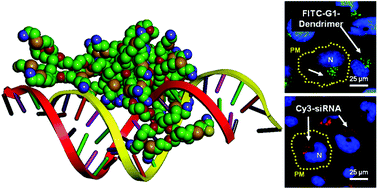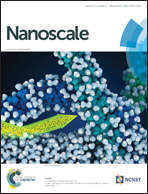Low generation polyamine dendrimers bearing flexible tetraethylene glycol as nanocarriers for plasmids and siRNA†
Abstract
Low G1 generation polyamine dendrimers built around programmable, flexible, and short tetraethyleneglycol branches were readily prepared in a divergent manner using a combination of orthogonal AB3 or AB5 units and highly efficient chemical transformations based on Cu(I) catalyzed alkyne–azide cycloaddition (CUAAC) and thiol–ene click reactions. The constructs showed that the G1 polyamines with only twelve and eighteen amine surface groups can successfully deliver siRNA in human cells, with transfection efficiency comparable to that of Lipofectamine 2000®. Measurements of cell viability following transfection of plasmid DNA and siRNA showed that the dendritic polyamines are less cytotoxic than Lipofectamine 2000® and are thus preferable for biological applications.


 Please wait while we load your content...
Please wait while we load your content...